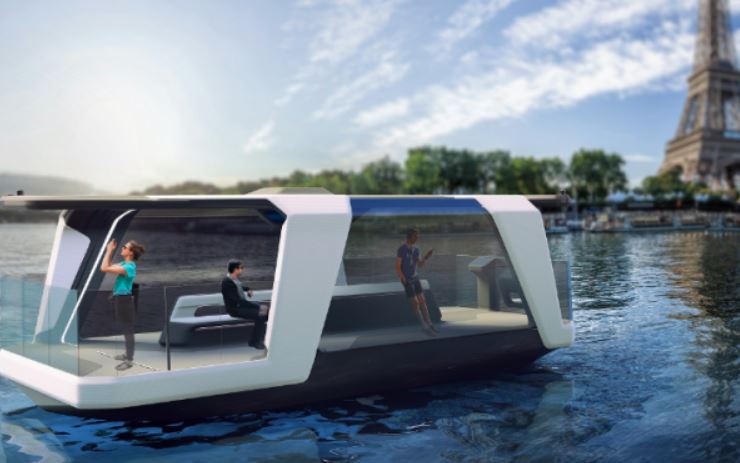The French inland waterway authority Voies Navigables de France (VNF) has been actively seeking environmentally sustainable river shuttles for the 2024 Olympic Games, which will be used by athletes and visitors as a mode of transportation.
In December of the previous year, VNF selected three projects for this purpose, one of which was led by Holland Shipyards Group, Sequana Développement, and Roboat. The hull of the ferry will be partially or wholly constructed with 3D printing using recycled materials.
The boat will be able to carry up to 35 people at a time along the Seine River, where the aquatic games will take place. The Olympics will commence on July 26th, 2024, in Paris, France, and the French government has challenged everyone involved in the preparation process to prioritize environmental preservation and work in a way that considers the climate challenges we currently face. In a press release, VNF stated that river transport provides an excellent opportunity to meet climate and environmental goals as an alternative to road transportation for the mobility of people and logistics of goods.
VNF is collaborating with transport operators, local authorities, and industrialists to explore innovative waterway uses, including last-mile logistics and the adoption of low-carbon modes of propulsion. Therefore, to support the development of zero-emission autonomous boats, VNF issued a call for more eco-friendly ferries. The boats will be self-driving, equipped with sensors and other advanced tools, and designed using additive manufacturing techniques.
Among the three projects selected, Holland Shipyards Group, Sequana Développement, and Roboat are using 3D printing to design their autonomous boat. Roboat is an initiative led by the Massachusetts Institute of Technology (MIT) team that began in Amsterdam, and the 9-meter-long and 3.9-meter-wide boat structure will have electric propulsion and an automatic docking system for the Olympic Games. While the manufacturing technique is unknown, it is possible that either an extrusion machine or a robotic arm was used.

It remains to be seen if these autonomous shuttles will be ready for the Olympic Games and how many of them will be deployed in the capital to facilitate transportation. Nevertheless, the use of 3D printing and recycled materials in the construction of these autonomous boats is a significant advancement in the maritime industry's sustainability efforts.